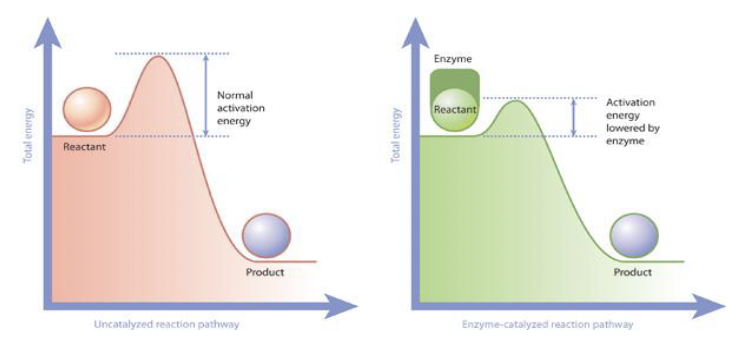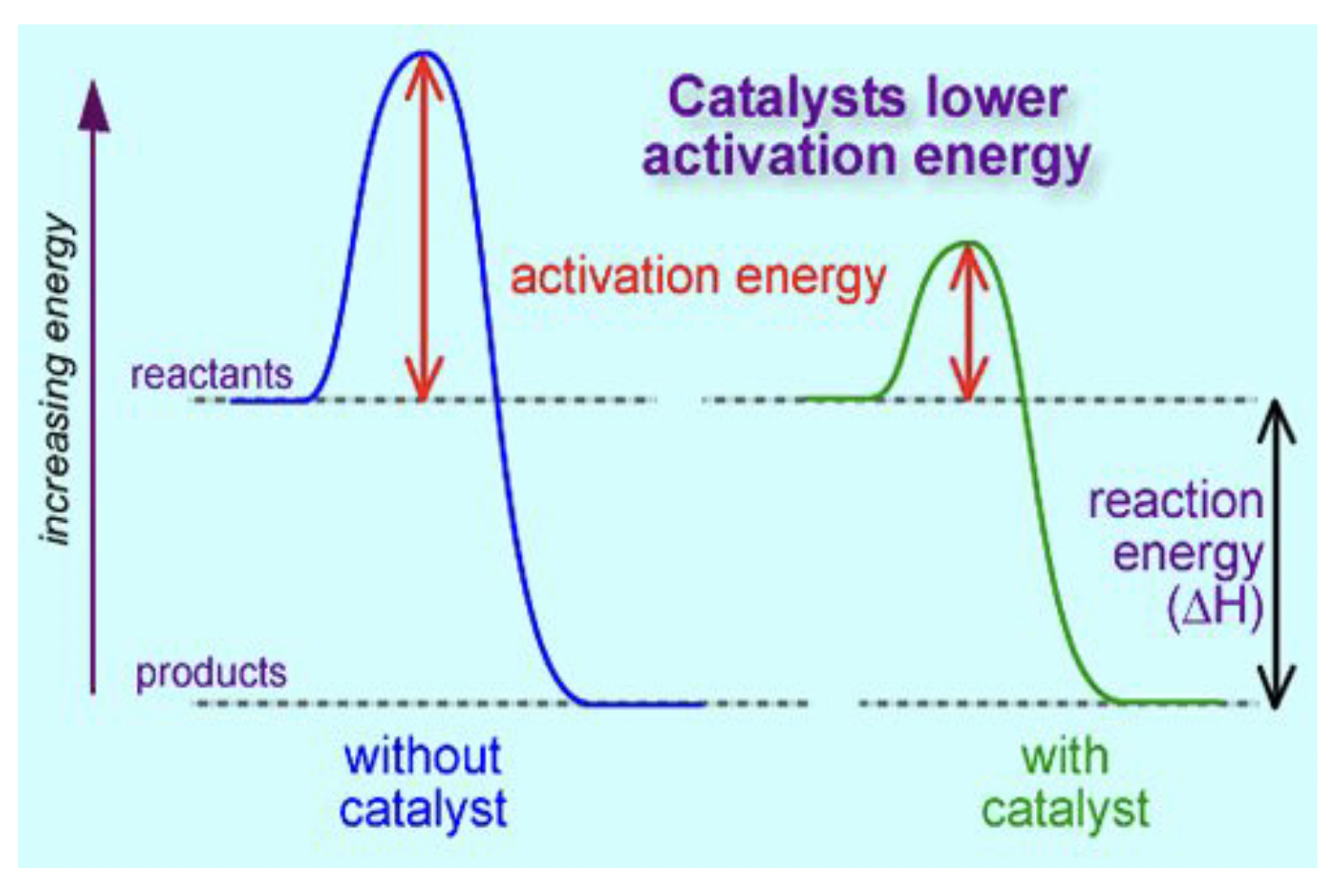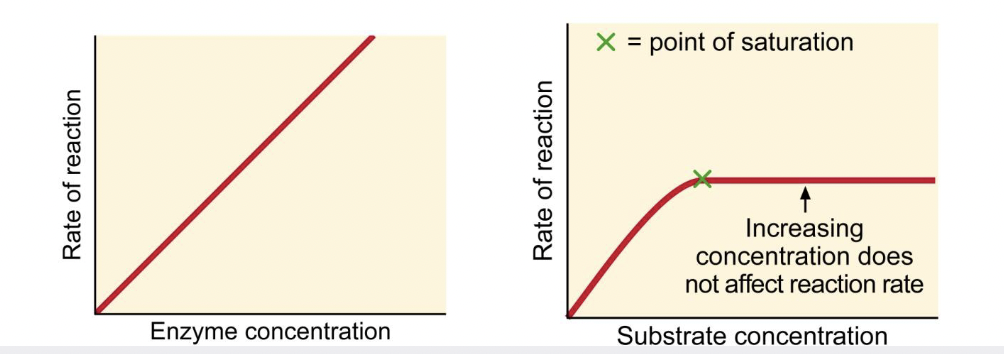12-06: Enzymes
What are Enzymes?
Biological catalysts: proteins that speed up metabolic reactions by lowering energy barriers
Assist in chemical reactions, but are not used up in the reaction
They lower the activation energy (minimum amount of energy required to initiate a reaction) of the reaction
Many names end in -ase (e.g. lactase, amylase, etc)


Enzymes and Substrates
Enzymes are substrate specific
- They depend on the enzyme’s 3D shape (remember that structure determines function) - though enzymes are as well flexible
An enzyme binds to its substrate and catalyzes its conversion to product
- Substrate: the substance an enzyme acts on & makes more reactive
The substrate binds to the enzyme’s active site

Models for Enzymes
- Originally was the lock and key model → idea that it had to fit in like a key into a lock
- Now updated to the induced fit model → the enzyme hugs the substrate and isn’t rigid but still has to be a close enough fit
How Enzymes Work
- Distorts the substrate’s chemical bonds so less energy is needed
- Provides a micro environment that is more ideal for the chemical reaction (e.g. pH)
- Side chains of amino acids can be positioned to participate in the reaction and can help with the reactivity - there to break the bonds within the substrates imitates the reaction to occur more readily
Reaction Rates
Concentration of substrate plays a role in reaction speed
More substrate = faster reaction, until it reaches the point of being saturated
- Enzyme saturated: all enzyme are being used to reaction rate plateaus (if all active sites are occupied)
- With enzyme saturation, the rate of reaction is determined by the rate the active site converts substrates into products

Optimal Conditions
- A cell’s physical & chemical environment impacts enzyme activity
- Each enzyme has optimal environmental conditions that favour the most active enzyme conformation (the enzyme works best when its in its favourite shape and environment)
- Temperature and pH impact the enzyme
- Optimal temperature allows the greatest number of molecular collisions without denaturing the enzyme - heat makes collisions increase but if there is too much heat, it will denature the enzymes → the optimal temperature for most human enzymes is 35ºC - 40ºC
- Optimal pH for most enzymes is 6-8 but some will operate at more extremes of pH (like digestive enzymes; pepsin is lower and trypsin is higher in pH)
Cofactors
- Sometimes enzymes don’t work even in optimal conditions - they need the help of cofactors and coenzymes to help catalyze reactions
- They may bind tightly to the active site or loosely to both active site and substrate - allowing the enzyme to function
- Cofactors: small nonprotein (e.g. metal atoms of zinc, iron, copper)
- Coenzymes: organic molecules (e.g. vitamins)
Inhibitors
- There are molecules that bind to enzymes to make them less effective
- 2 types of inhibitors: competitive and noncompetitive inhibitors
Competitive Inhibition
- Competitive inhibitors: molecules that bind reversibly or irreversibly to the active site
- Compete with the substrate for space in the active site
- Reversible: looks similar and behaves similarly to the substrate, when the competitor is in high concentration to inactivates the enzyme by outcompeting the substrate - reversible as the competitor can be overwhelmed by high concentrations of substrate
- Irreversible: the competitor occupies the active site permanently and therefore deactivate the enzyme, e.g. carbon monoxide is an irreversible competitive inhibitor of hemoglobin which competes with oxygen
- Most naturally occurring inhibitors are irreversible
Non-competitive Inhibition
- The inhibitor reacts with the allosteric site (some other place on the enzyme that isn’t the active site), changing the shape of its active site
- If the shape is altered then the substrate can’t bond to it
- Reversible (allosteric control): used to regulate metabolic pathways in the cell (series of chemical reactions required for a specific product)
- The final product molecule acts as inhibitors to enzymes earlier in the pathway (typically the first)
- This is called negative feedback (giving info to stop something from happening)
- Negative feedback prevents runaway reactions and overproduction of products
- Irreversible: bind irreversibly wth some other part of the enzyme and permanently denature/inactivate it
- Permanently alter the native conformation of the protein (e.g. cyanide inhibits cytochrome c oxidase and effectively blocks cellular respiration causing the organism to die)
Control of metabolism
- Allosteric enzymes have 2 conformations - one catalytically active and the other inactive
- Binding of an activator to an allosteric site stabilizes the active conformation
- Binding of an inhibitor to an allosteric site stabilizes the inactive conformation
- Enzyme activity changes continually in response to changes in the relative proportions of activators and inhibitors